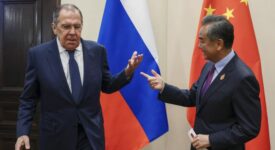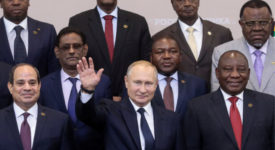In late March and early April 2015, the United States Air Forces in Europe (USAFE) held a military exercise when the Americans mostly practiced strikes on ground targets. At the same time, a military exercise over the Baltic Sea was conducted with the participation of the Scandinavian countries, namely the neutral Sweden and Finland. In the current process of strengthening the NATO’s military presence in the Baltics, the United States has assumed the leading role while other countries such as Germany, the United Kingdom or Denmark have committed themselves to strengthening their military presence in the region throughout 2015.
There are growing concerns of a possible Russian intervention into NATO’s eastern flank that includes the Baltic countries, Poland, Romania, and Bulgaria, which leads to the strengthening of air and ground forces in the region. At the NATO Summit in September 2014, leaders approved the Readiness Action Plan that includes a series of anticipated exercises in, on and around NATO’s eastern flank. The details of the plan were discussed and approved by the defense ministers of the NATO Member States in February 2015. From the perspective of the Baltic countries, the summit’s outcomes are crucial mainly with respect to the plan to form ground tactical units with the possibility of air and naval support – a force of about 5,000 soldiers. Other targets were set primarily in the integration of military infrastructure, supplies and military equipment and the three-month rotating mechanism for the presence of the military forces.
Throughout this year, the United States will continue increasing the number of military exercises in this region and maintain the highest number of units and military equipment in the area. Germany is planning to honor its commitment to significantly increase the number of its units that reach up to 5,000 men during the military exercises. From the German perspective, it is all about increasing its credibility and image of a reliable ally but also of a political negotiator that can facilitate a new dialogue between the NATO and Russia. The United Kingdom intends to send about 4,000 soldiers this year whereas the French military presence will be rather bland, just like in 2014.
The demonstration of high cohesion and reliability of the NATO Member States as well as protectionist positions towards the Baltic countries continue to be key factors here. If Russia viewed the NATO members as fragmented and incapable of action, it could potentially lead to the re-assessment of Moscow’s strategy while increasing its determination to test the NATO’s readiness in the Baltics.
Article Tags:
Bulgaria · Moscow · NATO · Poland · Romania · Russia · United States Air Forces in Europe · USAFEArticle Categories:
THINK-TANK






